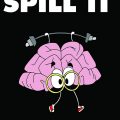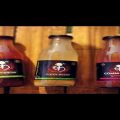
Defining Branding

By Satish Raju, Founder & Director – Guru Media Entertainment Group of Companies.
The world of start ups is all about being cooler these days. Fancy coined words, elaborate imagery and flaunting functions. This article is to stay rooted, working on the basics of "getting noticed" in an over crowded informative world. A brand that stood out for whatever the reason is vaguely pooled as "BRANDING". But is it?
Over a cup of coffee late evening, a few friends from the ad-world, started explaining what 'branding' was all about. I heard several different definitions on "branding".
- It's an aesthetic style that consumers should recognize. (The visual approach)
- It's a consistent message that must be pushed out to consumers as
frequently as possible. (The big-advertising approach)
- It's a story that we tell ourselves and each other. (The narrative approach)
- It's a reasonable amount of value that consumers should be willing
to pay a reasonable amount for. (The classic marketer's approach)
- It's a culture.
- It's a promise.
- It's the iPod.
- It's whatever we can do to be like Nike/Starbucks/Coke.
While I think that each of those statements is accurate to some degree, the reality is different for every company. After all, different companies have different customers, services, and business goals! Not every company sells a famous logo printed on a container of sugar water; thus, not every company should try to be Coke. Every company should try to find its own path in crafting a brand.
But if I had to give one definition to apply in all cases, it would be something like this:
The brand is what you tell your friends about afterwards.
Think about it. When you have a great (or bad) experience with a restaurant/airline/hospital/
Of course not: you tell your friends what was important to you – the details about your particular experience. And that's the brand. Nothing more, and nothing less, than the sum total of all the customer experiences served up by that company.
Here's an example. Sitting for dinner at a Chinese restaurant on last week, I heard a diner beside my table, telling his friend, who is new to the restaurant, why he loves 'devil chicken' (a dish serve by the restaurant). He went to great lengths to explain how consistent that dish was. Spicy, not oily, great to look at - all the things that he has valued in his personal experience. This was the most accurate description of the brand he could give, and the most effective that his friend could hear - better than a dozen TV commercials. The restaurant couldn't control what the guy said, but they could – and did - control the experiences he had as a customer. Thus the brand got built.
And I ordered devil chicken myself.
With this in mind, let's simplify that definition:
THE BRAND IS THE CUSTOMER EXPERIENCE
And that's all it is. It's not primarily a story, or a logo, or a style, or even a value proposition. Primarily the brand is just what customers tell each other about: their experience.
So if you want to create a good brand, the best - perhaps the only - investment to make is in the customer experience. This means learning from customers through direct observation, and crafting a strategy built from that customer input.
I'm not suggesting the death of advertising; nor am I suggesting that companies avoid mission/vision statements or logos or color palettes. However, I am suggesting that all of those things are secondary. The primary job of any brand executive is to create an outstanding customer experience.
Once the customer experience is set, the other elements – aesthetic style, consistent messaging, value proposition, iPod-ness, Coke-ality, all of those wonderful ideas will take care of themselves.
Rest assured, START UP-ers.









